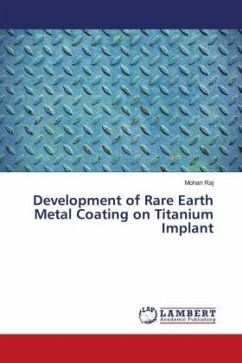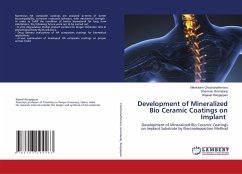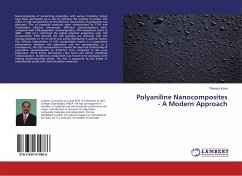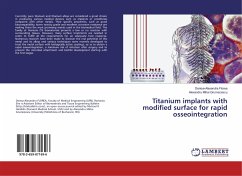
Development of Rare Earth Metal Coating on Titanium Implant
Versandkostenfrei!
Versandfertig in 6-10 Tagen
29,99 €
inkl. MwSt.

PAYBACK Punkte
15 °P sammeln!
Titanium (Ti) has been widely used in bone tissue engineering applications for decades (such as for dental and orthopedic applications). Titania (TiO2) forms on the surface of Ti in oxygen containing environments (such as the body) and has been shown to have suitable cytocompatibility properties but no inherent antibacterial properties. Bacterial infection is a main reason for dental/orthopedic implant failure. Infection is the major reason causing short (less than 5 years) dental/orthopedic implant functional lifetimes. It is, therefore, crucial that to improve the functional lifetime of Ti-b...
Titanium (Ti) has been widely used in bone tissue engineering applications for decades (such as for dental and orthopedic applications). Titania (TiO2) forms on the surface of Ti in oxygen containing environments (such as the body) and has been shown to have suitable cytocompatibility properties but no inherent antibacterial properties. Bacterial infection is a main reason for dental/orthopedic implant failure. Infection is the major reason causing short (less than 5 years) dental/orthopedic implant functional lifetimes. It is, therefore, crucial that to improve the functional lifetime of Ti-based medical devices, one must incorporate antibacterial properties into today's Ti. However, it is not trivial to identify an approach that will reduce bacteria growth without reducing mammalian cell functions. So, an attempt was made to avoid sealing and to produce thick titania and conducting polymer coatings with excellent corrosion resistance at room temperature by carrying out the anodization of titanium. After completion of the anodization process, polymerization will be carried out in electrolyte containing Pani to give composite coatings.












